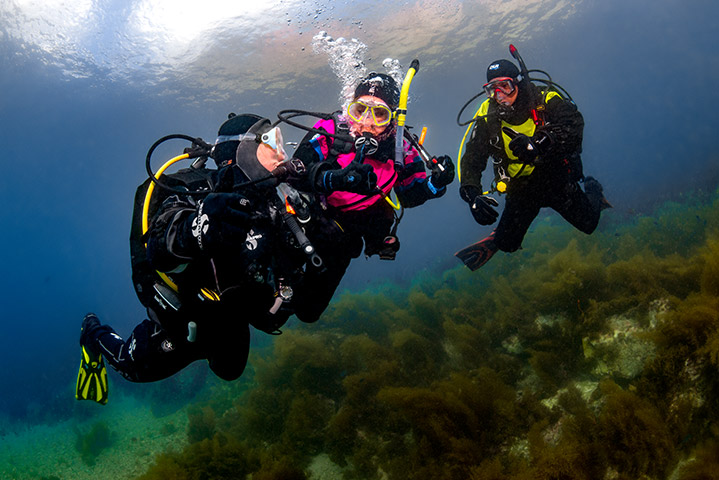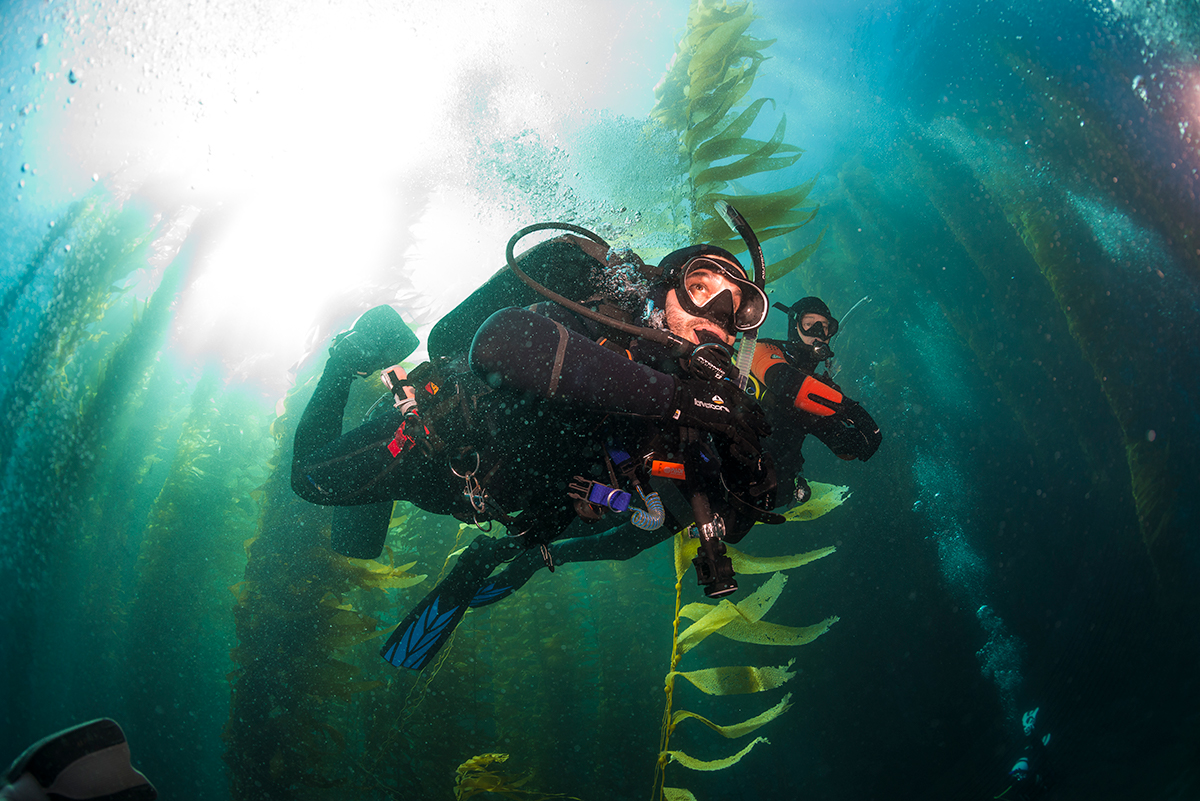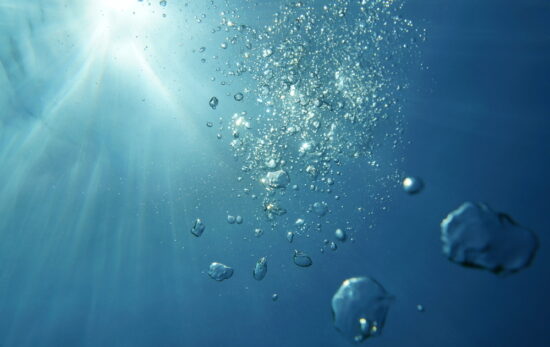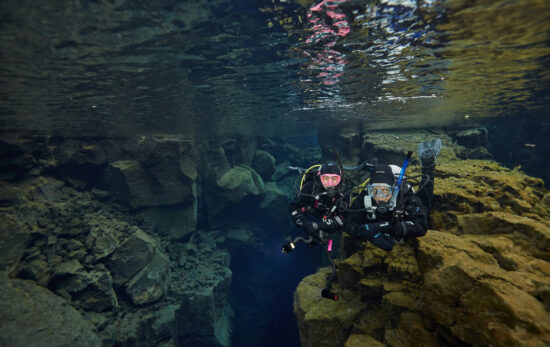Think dry suit diving is just for cold water divers and tec geeks? Think again…
If you hate being cold, and love being underwater, a dry suit is a great investment. Though more expensive than a wetsuit, a dry suit can last ten times longer and knowing how to dive dry literally opens up an ocean of new diving adventures.
You won’t often find dry suits available to rent. Just like with a scuba mask, fit is very important: a suit that’s too small is uncomfortable, and one that’s too big can leak or feel like you’re diving with a parachute behind you.
Read on to learn what questions to ask and factors to consider to find the perfect dry suit.

Membrane / Laminate suits vs. Neoprene
Broadly speaking, there are two types of dry suits: neoprene and membrane (sometimes known as a shell or tri-laminate).
Membrane / Trilaminate suits
A membrane suit is made up of thin layers of material laminated together. A suit with three layers is a trilaminate suit. The materials vary but the purpose is the same – to keep you dry. It’s important to note that a membrane suit is a dry suit, not a warm suit. Membrane suits offer little insulation so, unless you’re diving your dry suit in Hawai’i (yes, that’s a thing), you’ll also need an undergarment to keep you warm.
A membrane dry suit dries quickly, and is easy to keep clean. Though more expensive than a wetsuit, they can last for years and years if properly maintained. A membrane suit is also more versatile. Go from temperate diving to ice diving by switching to a thicker undergarment (and a pair of dry gloves).
Neoprene Dry suits
Neoprene dry suits are essentially a super-thick wetsuit that’s been crushed or compressed. Compression makes the suit thinner, waterproof and reduces (but doesn’t eliminate) buoyancy changes as the diver descends and ascends. Neoprene suits are warmer than membrane suits, but they are also heavier.
Due to the insular properties of neoprene, divers can wear lighter undergarments compared to membrane suits. They’re also very form-fitting, which can make donning more of a challenge, but underwater you’ll feel more streamlined than with a membrane or “bag” suit as they’re sometimes known.

Boots, Seals and Other Considerations
Socks or Rock Boots
Your dry suit will come with some kind of foot covering that’s attached to the suit. Neoprene socks are common, others have a lightweight boot. Depending on the terrain of your favorite cold water dive spot, you might buy “rock boots” which are more-or-less hiking boots for diving.
Latex, Neoprene or Silicone Seals
Neck and wrist seals keep water out of your dry suit. You may be able to choose from neoprene, latex and or/silicone seals.
Generally speaking: neoprene is the most durable, but it stretches out over time. Also, due to its thickness, some divers find pulling a neoprene seal over their head to be challenging.
Latex and silicone seals offer greater flexibility, and are typically easier to replace when needed. For divers with a latex allergy, silicone seals offer the same flexibility as latex, but are more prone to tearing.
Other features to consider:
- Zipper placement (front or back)
- Pockets or no pockets
- Dry gloves (for extremely cold environments)
And then there’s that question about….well, how to say this without sounding rude? There’s no bathroom in a dry suit. If you’re buying a dry suit to enjoy more time in the water, a P-valve may be an option to consider.
Before you buy: look in your gear bag.
Regardless of what type of dry suit you buy, be sure the rest of the gear in your bag is dry suit-ready.
– Check your BCD’s lift capacity. A lightweight BCD made for tropical diving might not be able to handle the additional weight you’ll need when diving dry.
– Will your fins give you enough horsepower? Special fins aren’t required for dry suit diving, but if you own a softer fin or split fin, you may find a stiffer fin is better. Also, if you purchase rock boots, be sure your new boot fits in the foot pocket.

Take a Test Drive
Ask your local PADI Dive Shop if they offer a Dry Suit Diver specialty course. It’s a great way to try out a dry suit, practice buoyancy, and learn important safety procedures.
Your local dive shop will also play an important role in the ongoing care of your drysuit. Seals inevitably tear, and sometimes drysuit zippers need some TLC. Having a local place to get your dry suit serviced is important to preserving your investment.
Think long-term and invest in a good fit
How does one determine if you’ve found a “good” fit? Easy, just pretend the dive shop is actually the gearing-up area of your favorite dive spot. Don’t feel silly, you’re being a smart shopper!
– Pretend to put your fins on. Is there enough room in the leg for you to bend you knee. Is there enough room in the seat for you to bend over?
– Reach both hands to the back of your neck, as though reaching for the tank valve.
– Squat down with both feet flat on the ground with knees fully bent. The suit should be roomy enough to allow you to do this.
Trying on a membrane suit? Be sure to have an undergarment on while trying the exercises above.
If you’re not able to complete all three of the exercises above, the suit is too restrictive. A suit that is too big or too small creates safety issues so even if it’s the right color or right price, don’t buy the suit if it’s not the right fit.
Search for a PADI Dive Shop to get additional advice and insights on your dry suit purchase, or to register for a Dry Suit Diver course. To start planning your next cold water adventure, we offer the following for inspiration:
- Silfra, Iceland – dive between two continents
- Grüner See, Austria – An underwater park complete with grass and park bench.
- Diverse marine life like wolf eels, leafy sea dragons, and other amazing creatures that prefer cold water.





